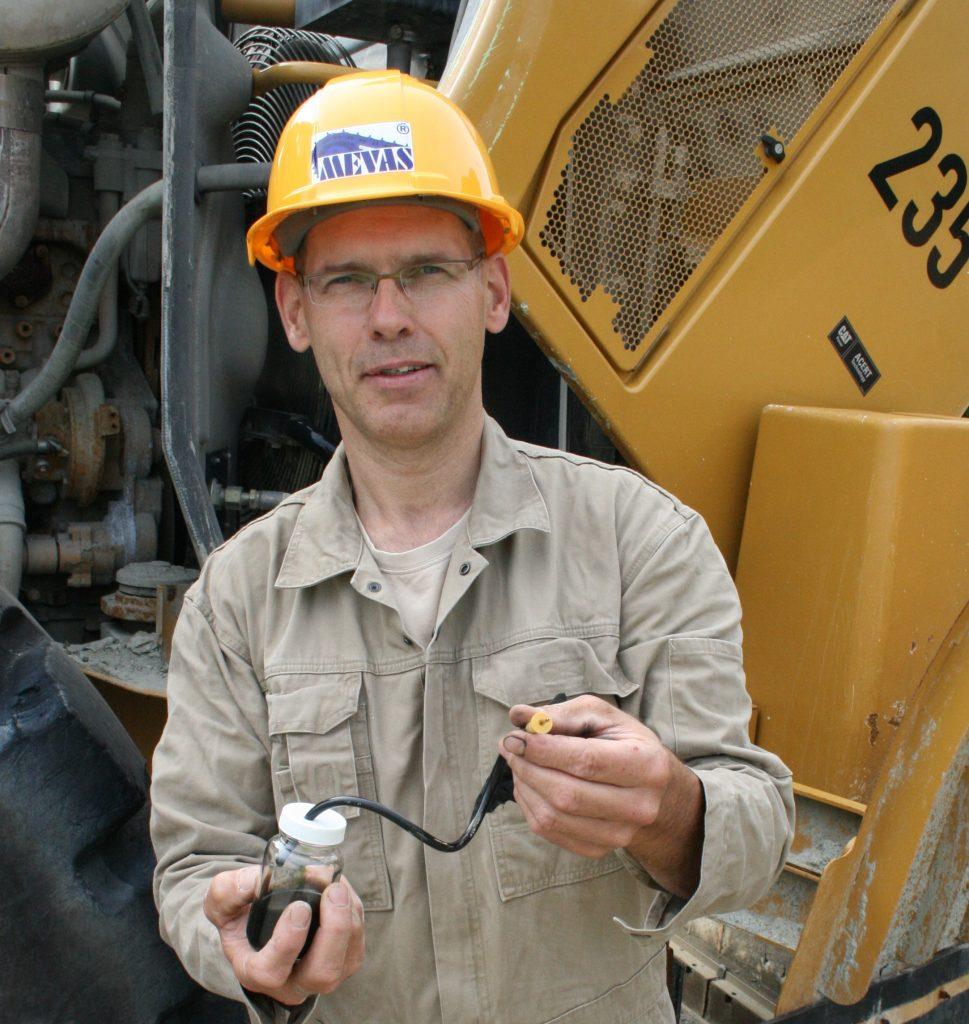What is oil sampling and how to do it?
Analyzing the oils used in construction machinery can be useful because you can read information about wear from the contents of the used oil. To do this, a mechanic or technician uses a very clean container and a pump to remove oil, e.g. from the engine, from the hydraulic circuit or from the gearbox. The extracted oils are sent to a certified laboratory. There, the lubricants are analyzed for their ingredients using various methods. It can be used to determine whether there are increased levels of silicon, sulphur, copper, coolant or other trace elements in the oil.

When is it reasonable to analyse oils of used heavy equipment?
An analysis of the existing oils only makes sense if you have an approximate idea of how long the oil was in use. If the oil has only recently been changed, an analysis of the condition is not very useful. There are then too few analyzable particles in the oil. If the oil used is much older than permitted, i.e. the change intervals have been significantly exceeded, the values will also be incorrect. But if the oil is in a normal change cycle, you can read a lot of information from the trace elements. It is therefore important to know whether the prescribed maintenance intervals on the construction machine have been observed.
What influence have working hours and temperatures to oil condition?
As already described above, it is important to know or to be able to estimate the service life of the existing oils. And to get meaningful results, it is necessary to warm up the machine. Otherwise there will be many particles, e.g. deposited on the bottom of the oil pan or in the filter. The oil must therefore be vigorously moved and the viscosity increased in order to obtain meaningful results.
What info does an oil sample report contain and what does it tell us?
A professional laboratory for the analysis of construction machine oils usually provides us with an interpretation of the analyzed values. Too much silicon means dirt gets into the machine’s systems and you have to look at where and how dirt gets into the system. If coolant is found in the engine oil, there is a problem in the cooling system. If traces of aluminum are found in the transmission oil, one can conclude that there is increased wear in some components. The same applies to the presence of chromium, copper or magnesium. As soon as we have the results of an oil analysis, our technicians will advise you and describe the possible causes. A hint is given on what to do to avoid early problems.
By the way, to guarantee high quality of our oil analysis we work on this sector with the lab of Zeppelin Baumaschinen which is the CAT dealer for several countries in Europe.

